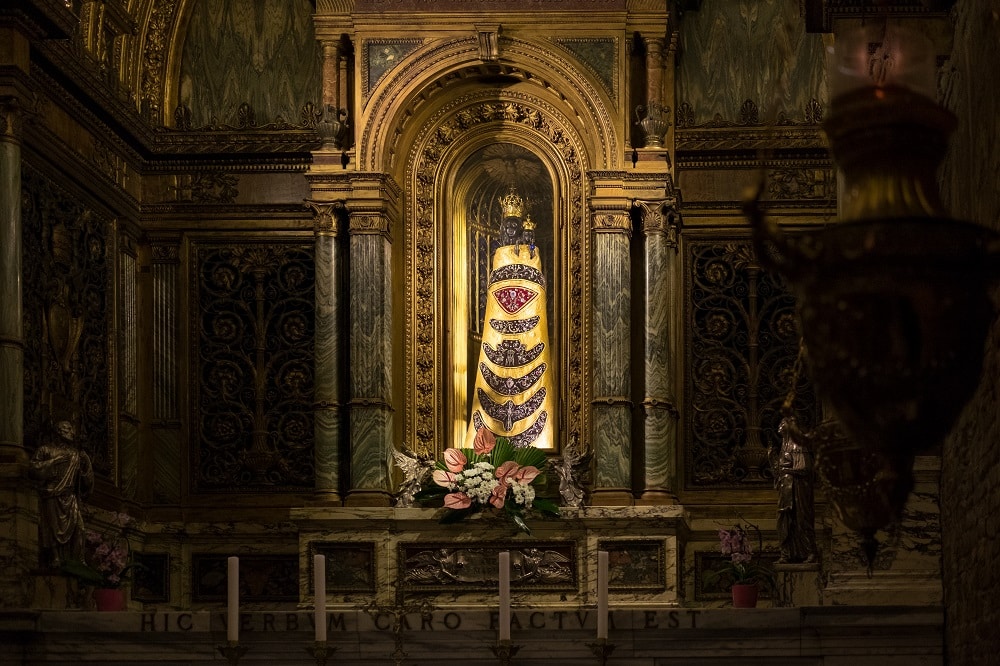A house with only three walls and therefore open to the world and to all people. This is how, beneath the precious Renaissance marble cladding, the Holy House of Nazareth presents itself, according to tradition transported “by angelic ministry” along a public street to Loreto: the earthly dwelling of the Virgin Mary, the place where she received the Angel Gabriel’s announcement and lived together with Joseph and Jesus, it bears witness to the most important event in history, the Incarnation.
Home of Mary, of the Holy Family, and every human being
Historical, archaeological, and scientific research seems to confirm its authenticity, first sanctioned in 1310 by a papal bull of Clement V. A recent study has shown that the stones of the building were worked according to the Nabataean way, widespread in Galilee at the time of Jesus. Graffiti, judged by experts to be of clear Judeo-Christian origin, is engraved on the stones, and the mortar used in the construction would have been alien to the building practices of the Marche. In addition, five cloth crosses that probably belonged to the Crusaders and some remains of an ostrich egg, a symbol of the mystery of the Incarnation, were found among the bricks of the Holy House, whose perimeter would coincide perfectly with the size of the foundations left in Nazareth. But why three walls? In all probability they constituted a part of the Virgin’s house, the masonry antechamber leading to the cave excavated in the rock at the bottom, still venerated today in the Basilica of the Annunciation in Nazareth.
Carried in the hands of the Angels
Many still wonder how this relic-rest, which at first glance does not appear to have been reconstructed and which also survived the disastrous fire of 1921 in which part of the pictorial decoration of the sanctuary and the original wooden copy of the Black Madonna were destroyed, could have been transported. According to tradition, in 1291, after the expulsion of the Crusaders from Palestine, the walls were transported first to Illyria, present-day Croatia, and then to the city in central Italy. A chronicle of 1465, written by Pier Giorgio di Tolomei, called the Teramano, refers: “… after those people of Galilee and Nazareth abandoned their faith in Christ and accepted the faith of Mohammed, the angels lifted the aforementioned church from its place and transported it to Schiavonia. But there she was not honoured at all as was due to the Virgin… Therefore, the angels removed it again from that place and carried it across the sea to the territory of Recanati”. Many today tend to support the hypothesis, supported by the ancient Cullisanese Chartularium code, that the angels of the tradition to whom the transfer is attributed are none other than the nobles of the Byzantine family of the Angels of Epirus, who in the 13th century saved the venerated sanctuary by sea from the fury of the Saracens. However, the perfect state of assembly and conservation of the stones has kept alive an interpretation of transport, open to the supernatural.
A house in every man’s street
The strange location on a “public street” is also striking. “In reality, precisely this singular aspect of the house preserves a particular message”, Benedict XVI said when visiting Loreto in 2012: “It is not a private house, but it is a dwelling open to all, it is on the way for all of us. We are all on the way to another dwelling place: the Eternal City”.










